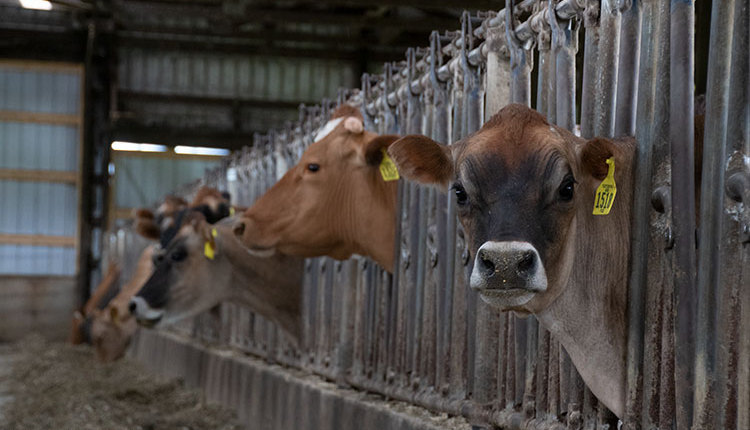
We recently did a trial with heifers that were 9 weeks of age, and were fed ad libitum pelleted grain and a second cut processed grass hay. We tested the effect of two different crude protein (CP) levels (22% versus 26%). To facilitate the CP difference between 22% and 26%, we used more wheat middlings, and as a result there was more neutral detergent fiber (NDF) in the 22% CP pellet (24% NDF) compared to the 26% CP pellet (20% NDF). Otherwise starch, sugar, and fat were similar. The second cut processed grass hay at about 15% CP, 55% NDF with a 61% 30-hour degradability.
Since we allowed ad libitum intake of the pelleted grain and hay, calves were able to consume what they wanted of each. Interestingly, we saw more influence of the NDF content of the pellet on intake in these animals than the CP content. There was no impact on growth and overall, these postweaned heifers grew well with an average daily gain of 3.3 pounds per day (1.5 kg/d).
On average, these heifers consumed 3.2% of their body weight as dry matter intake (grain plus hay). This is in line with previous work reported in a dataset by Quigley showing that heifers from 8 to 17 weeks of age ranged from 2.5% to 3.5 % of body weight for dry matter intake. There was no difference in intake as a percentage of body weight between the different diets fed in this study, as shown in the figure below.

Interestingly, NDF intake as a percent of body weight was different between the pellet with the higher NDF (24%) and the lower NDF (20%). Heifers that were fed higher NDF in the pellet averaged 0.85% of their body weight as NDF whereas calves that were fed lower NDF averaged 0.77% of their body weight as NDF. The intake of NDF as a percentage of body weight is shown in the second figure.

In cows, the typical benchmark for NDF intake as a percentage of body weight is around 1.2%. At this younger age, when heifers are fed pelleted grain and dry hay, it seems that this general benchmark does not apply. Rather for the 11 weeks or so that these heifers were fed, the maximum intake that was achieved seemed to top off around 0.9% of body weight. It would be interesting to compare this concept to other feeding scenarios like total mixed ration feeding. There seems to be some control of dry feed intake through different sources of NDF which may allow us to better predict dry matter intake of these young heifers.








